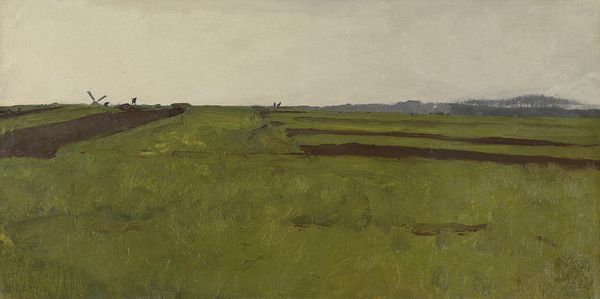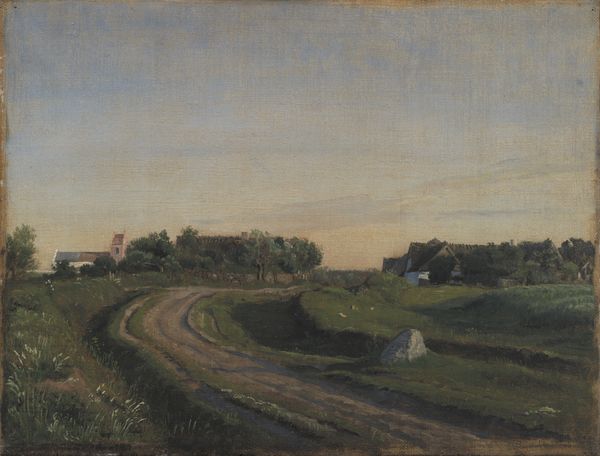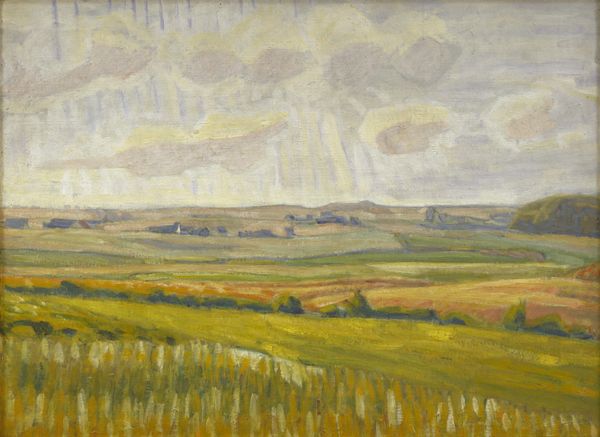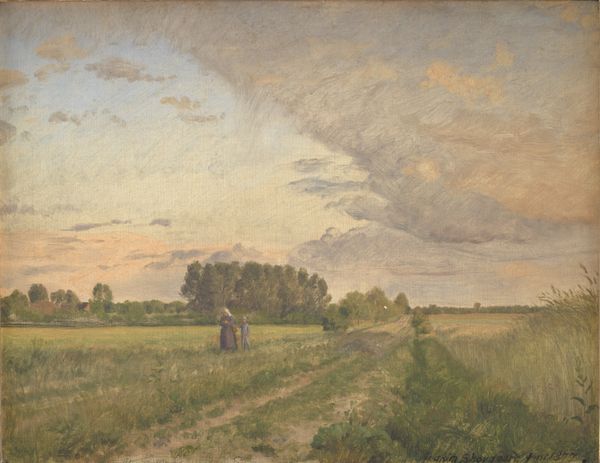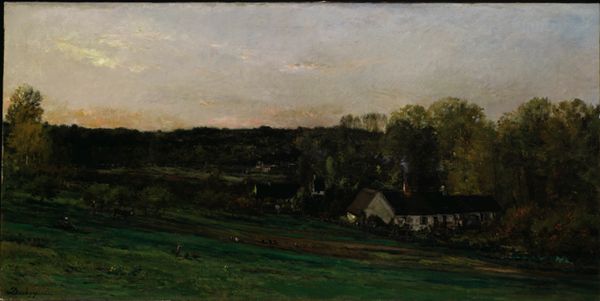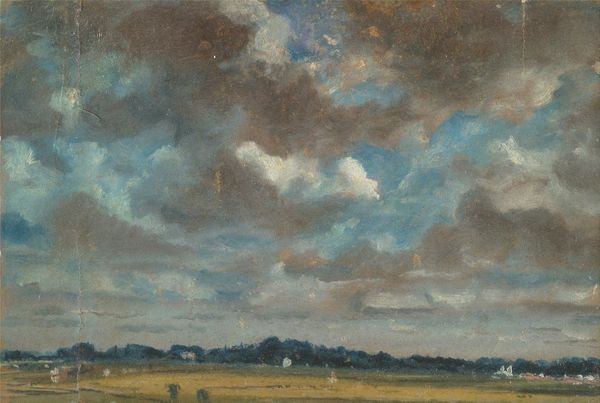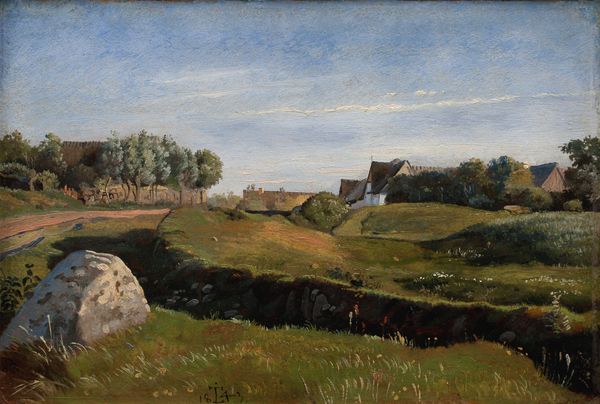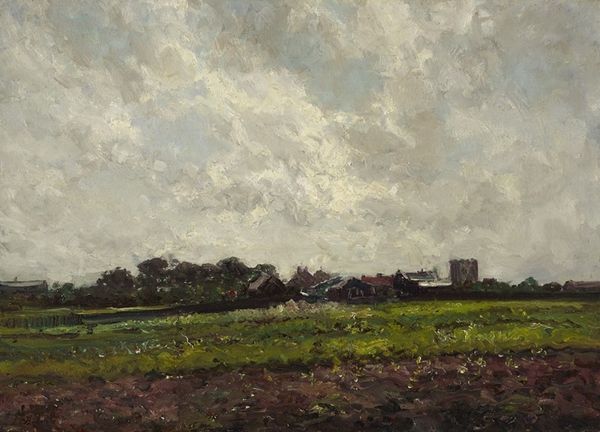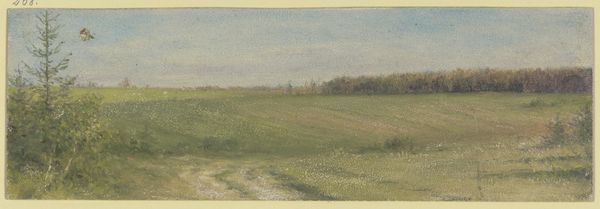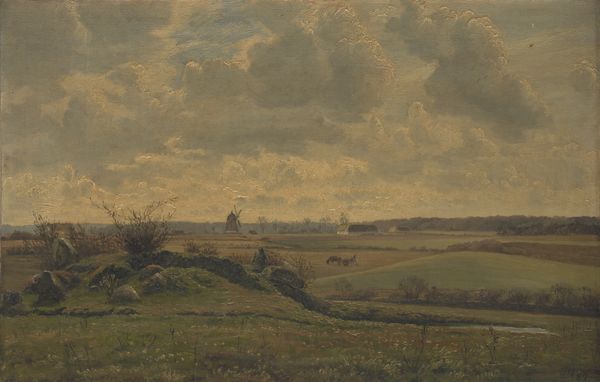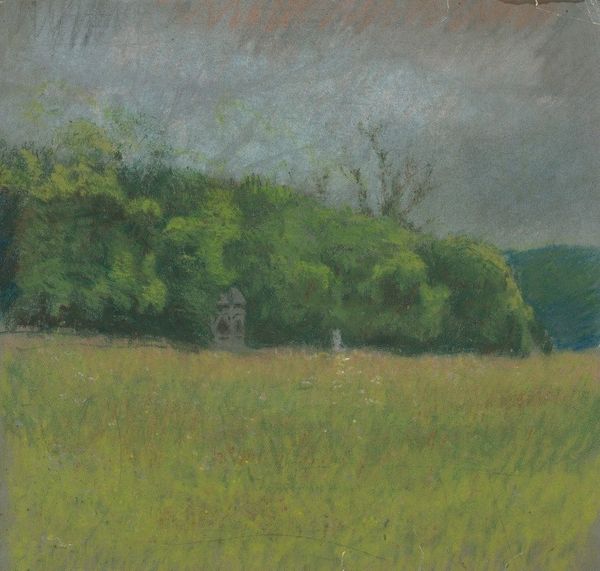
Dimensions: 62.0 x 77.0 cm
Copyright: Public Domain
Curator: Wilhelm Trübner's "Stubble Field with Ascending Path near Wessling," created in 1876, invites us to consider rural life in 19th-century Germany through oil on canvas. Editor: The immediate impression is one of subdued quiet. The overcast sky dominates the canvas, casting a rather somber light across the landscape. The ascending path hints at labour, a connection to the earth, yet there's also a sense of isolation. Curator: Precisely, it presents a carefully constructed image rooted in the realities of its time. Consider the burgeoning industrial revolution and its impact. Representations of the rural took on different political weights, referencing an era when industrialization fostered complex rural transformations. Editor: It makes me consider issues of land ownership and class during this era. The buildings on the horizon – perhaps a farmhouse or a smallholder’s dwelling – invite questions about who labored here, who benefited, and how such work intersects with representations of the sublime or picturesque found elsewhere in landscape art. Curator: It's relevant to think about the socio-economic factors, especially since Trübner, though associated with Impressionism and known for plein-air painting, departed in notable ways from many contemporary movements of his time. How does he use technique to offer visual cues to these issues? Editor: The earth tones feel weighted down with a heavy mood that resonates, a reflection of hardship but perhaps, more significantly, quiet resistance. We are also seeing the transition in landscape paintings – the brushwork becomes expressive of internal mood more than photographic precision. The buildings become muted under cloudy, moody skies. It isn’t celebrating the industrialization, or picturesque charm, but instead offers a somber assessment. Curator: And thinking intersectionally, we must examine how access to this landscape might be experienced according to class or gender at that time. For Trübner, the image allowed space to comment on the transformations to traditional ideas of property. Editor: Absolutely, viewing art in context enables us to not only examine art as aesthetic expressions but as complex, embedded social texts that still challenge us. Curator: Indeed. Engaging in this critical process ultimately transforms art from silent object to active participant in historical dialogues, furthering our insights regarding societal forces.
Comments
No comments
Be the first to comment and join the conversation on the ultimate creative platform.
